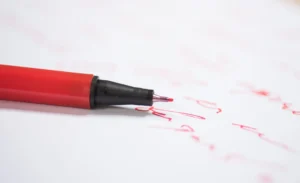KPA Lawyers – March 26, 2019

Although the Small Claims Court is designed to be accessible to people who decide not to retain the services of a lawyer or licensed paralegal, appealing a decision made by a Deputy Judge of the Small Claims Court after your trial is a very different matter altogether.
Appeals from Small Claims Court in Ontario are decided by a panel of one or more Justices (judges) in a place called Divisional Court.
There are a number of complex forms that must be filed in Court, and these forms are not your typical fill-in-the-blank sheets with check-boxes and some fine print. The necessary materials require you to make convincing legal arguments based on case law, follow specific printing & binding rules, and meet strict deadlines. In other words, your appeal (or response to an appeal) is almost certain to fail without the assistance of a lawyer.
There are also other eligibility requirements to keep in mind. For example, you cannot appeal a Deputy Judge’s decision from Small Claims Court if the case involved the payment of less than $3,500 (excluding legal expenses) or involved the recovery of personal property less than $3,500 in value.
How do I start an appeal?
You must fill out and deliver the following items to the opposite party within 30 days of the date of the Court Order from Small Claims Court:
If you miss the 30 day deadline, then you’ll be in for a bit of a headache. Specifically, the Court will tell you that you are simply out of time and the court clerk will refuse to accept your appeal documents. However, there are still options. You could ask the Respondent (opposite party) for written consent to bring your appeal late (good luck with that though) or you can bring a motion in Court and try to convince a Judge to permit you to file your appeal after the deadline.
How does the Notice of Appeal work?
The Notice of appeal contains the following three major pieces of information:
- the relief sought;
- the grounds of the appeal and;
- the basis for the Divisional Court’s jurisdiction
In plain English, the “relief sought” is what you are asking the Divisional Court to do with your case.
The “grounds for the appeal” are the legal reasons why the appeal should be granted. Keep in mind that the grounds for the appeal is not a second kick at the can (so to speak) to re-argue your whole case again. In almost every appeal, you must establish that the Judge made an error in correctly applying the law. Lawyers have the necessary training (and specialized software) to detect when such errors may have occurred. Unless you’ve been to law school, you’re unlikely to establish “grounds” that the Divisional Court will accept.
And to round off the above points, the “basis for the Divisional Court’s jurisdiction” is the reason why the Divisional Court is permitted by law to deal with the case. To do this, it’s best to state the specific section number of the Courts of Justice Act that establishes jurisdiction.
How does the Appellant’s Certificate Respecting Evidence work?
The Appellant’s Certificate Respecting Evidence is a document that describes those specific parts of the evidence from the original trial that the appellant believes is necessary for the appeal.
Be careful with this document. There are financial consequences to overstating what evidence is necessary. For example, if you think the Divisional Court needs to see the entire transcript of each and every single witness that testified, but in reality, you only needed a few minutes of testimony from one particular witness, you might end up paying some money to the respondent of the appeal.
Again, a lawyer is the best person to tell you what evidence is required and what evidence is not.
Service (delivery)
So you’ve got these wonderful court documents prepared. Now, you’ll have to give them to the Respondent (opposite party) and give them to the Court.
Giving documents to the opposite party is called “service”.
After you have “served” the other party, you will need to file a copy of these documents in Divisional Court as well (this is called “filing”, not “service”). Don’t wait too long to complete your filing though, because you’ll have to file your Notice of Appeal in Divisional Court within 10 days after you served the Respondent(s). You can take that opportunity to also file your Appellant’s Certificate along with your Notice of Appeal.
When you visit the clerk at the Courthouse for filing, he or she will require you to provide “proof of service”. The only way to properly provide proof of service is to swear an Affidavit of Service. If you’re thinking about using the same Affidavit of Service you used in Small Claims Court, it won’t be accepted in Divisional Court. When you escalate to a higher level of Court, the forms get a little more complicated. You will want to use the Affidavit of Service (Form 16B).
Transcripts from Small Claims Court
In a perfect world, the Divisional Court, and the Small Claims Court, and every other Court in the country would keep all their records and transcripts in one place so you, as a member of the public, wouldn’t have to go through the extra trouble that we’re about to describe. Unfortunately, we don’t live in a perfect world, and it is your responsibility to go back to the Small Claims Court that made the decision which you’re trying to appeal, and figure out obtaining the transcripts on your own.
You’ll need an approved Court Transcriptionist to convert the recording of the trial into approved court document, and you’ll need to be quick about it, because the law requires you to obtain a Certificate of Ordering a Transcript for Appeal from the Small Claims Court and file a copy of it in Divisional Court office within 30 days from the date you filed your Notice of Appeal.
Perfect your appeal
You’ll need to perfect your appeal, and if you sounded that word in your head like “that dress looks perfect on you”, (used as an adjective) then you’re thinking of the wrong word. We’re talking about the verb, perfect, with the emphasis on the second syllable.
Perfecting your appeal is best approached the same way you would follow a recipe. Get your ingredients together and take it one step at a time. You’ll need the following:
- Appeal Book and Compendium;
- Exhibit Book;
- Appellant’s Factum;
- Transcripts, if any;
- Book of Authorities; and
- Certificate of Perfection
Most serious civil litigation lawyers use specialized software to produce the above documents. However, if you’re trying to create them from scratch, we suggest clicking on each of the above items to learn a little bit more about what they are.
If you don’t need a transcript of the Small Claims Court trial (which is rare) then you are required to perfect your appeal within 30 days starting from when you filed your Notice of Appeal.
However, if your case is like the vast majority of cases, and you do need a transcript of what happened in Small Claims Court to properly explain your appeal to a Divisional Court Judge, then the deadline to perfect the appeal is within 60 days starting from when you received notice from the transcriptionist that the transcript was completed.
Okay, I did all of that, now what?
If you successfully completed all of the above steps, congratulations. The Court will place your case the list of cases to be head by a Judge, and the Court will mail a Notice of Listing for Hearing to every person that you listed on your Certificate of Perfection.
You can sit back and wait for the Respondent to take the necessary steps to respond to the appeal. However, keep in mind that you’ll ultimately have to make a legal argument in front of a Judge explaining why your appeal should be granted. You won’t get to call a witness, and you’ll be expected to intelligently rebut any legal arguments that the Respondent’s lawyer might raise, whether you have a lawyer or not.
Unlike the Small Claims Court, the Divisional Court wasn’t designed for persons without legal training. You’re far more likely to make a compelling argument to a Judge if you have a lawyer speaking on your behalf.
Feel free to contact us for a consultation to discuss a current or proposed appeal in Divisional Court.



